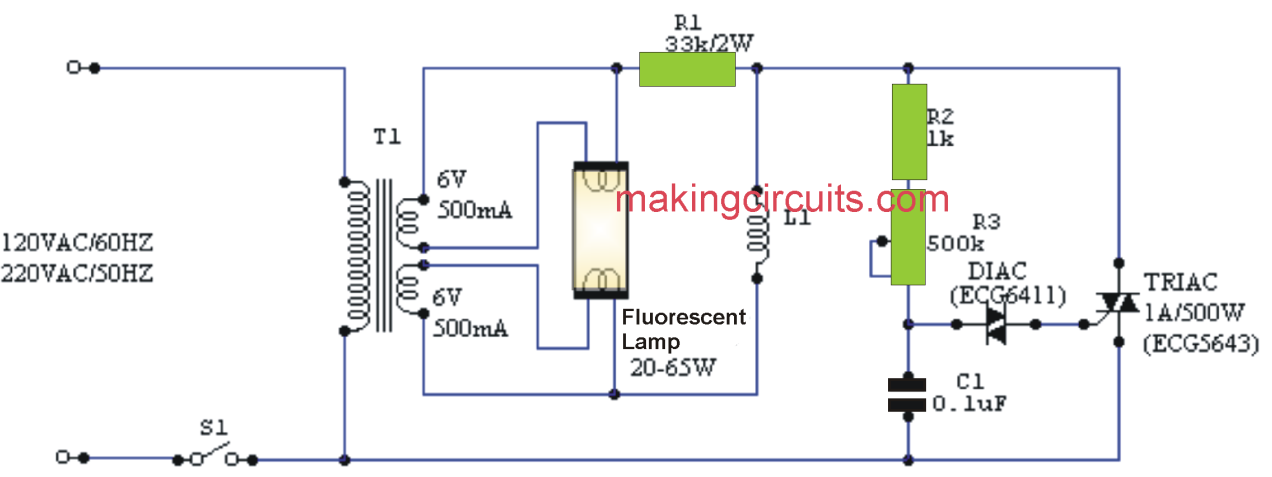A typical dimmer intended for incandescent lamps cannot be utilized directly to control the luminous strength of fluorescent lamps. Nonetheless, it could be conveniently modified for this specific purpose by adding the modifications pointed out in the figure. In cases like this, the "starter" is removed, while the choke, or the ballast or shock reactance (L1) can certainly continue in the circuit to be able to limit the interference brought on by it. The filaments (cathodes) of the lamp, conversely, are preheated using a transformer by using a couple of independent windings (T1). Consequently, the circuit will not be well suited for slimline or direct start lamps.
The Triac, the diac and its related components (r2, P2 and C1) together bacome a standard phase control dimmer to which any kind of snubber system formerly incorporated into has been eliminated. Potentiometer P1, which usually works as a brightness control, has to be designed with a plastic material shaft. If the control range is inadequate, it is possible to test out some other values of C1. The second option should have a baseline operating voltage of 400V. The resistance R1 (33k / 2W) could be substituted by 3 resistors of 100 k / 0.5W each in parallel.

This scheme doesn’t work for you, you’re missing one wire.
Which wire is it missing?